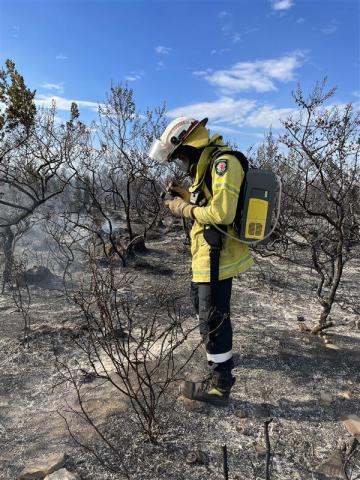


A passion for protecting communities and a personal commitment to firefighting motivated postgraduate student Dr Kiam Padamsey to complete a PhD project, already making improvements to the health and safety of Western Australian firefighters.
Kiam, a volunteer firefighter himself, wanted to better understand the occupational health risks faced by frontline firefighters during bushfires. Supported by a postgraduate scholarship from Natural Hazards Research Australia (the Centre), Kiam’s work fills a critical knowledge gap that has already led to tangible improvements in firefighter protection.
“The scholarship from the Centre was essential, not just for the research, but for me personally. The financial support helped make this work possible,” Kiam said.
Kiam’s thesis, conducted at Edith Cowan University in Western Australia, focused on the under-researched health risks faced by both volunteer and career forestry firefighters. With firefighting recently classified as a carcinogenic occupation by the International Agency for Research on Cancer (IARC), Kiam’s research couldn’t have come at a more crucial time.
The project included five interconnected studies ranging from personal exposure monitoring and chemical analysis of bushfire smoke to interviews exploring firefighters’ understanding of protective equipment. Among the key findings, Kiam identified that firefighters are exposed to high levels of particulate matter and volatile organic compounds (VOCs), especially during the smouldering phase of fires.
Findings also showed many forestry firefighters lacked access to adequate respiratory protection and decontamination facilities, with firefighting gear continuing to release harmful chemicals after use, posing secondary exposure risks.
Thanks to Kiam’s work, more than 700 Western Australian forestry firefighters are now being issued P3-rated respiratory masks ahead of bushfire seasons. His findings also prompted calls for improved laundering and showering facilities, as well as for further research into decontamination protocols and long-term health monitoring.
As Kiam celebrates the completion of his PhD, his work will continue to influence how Australian emergency services manage health risks to this dangerous and essential profession.
Learn more about Kiam’s work here.

Image: Kiam Padamsey